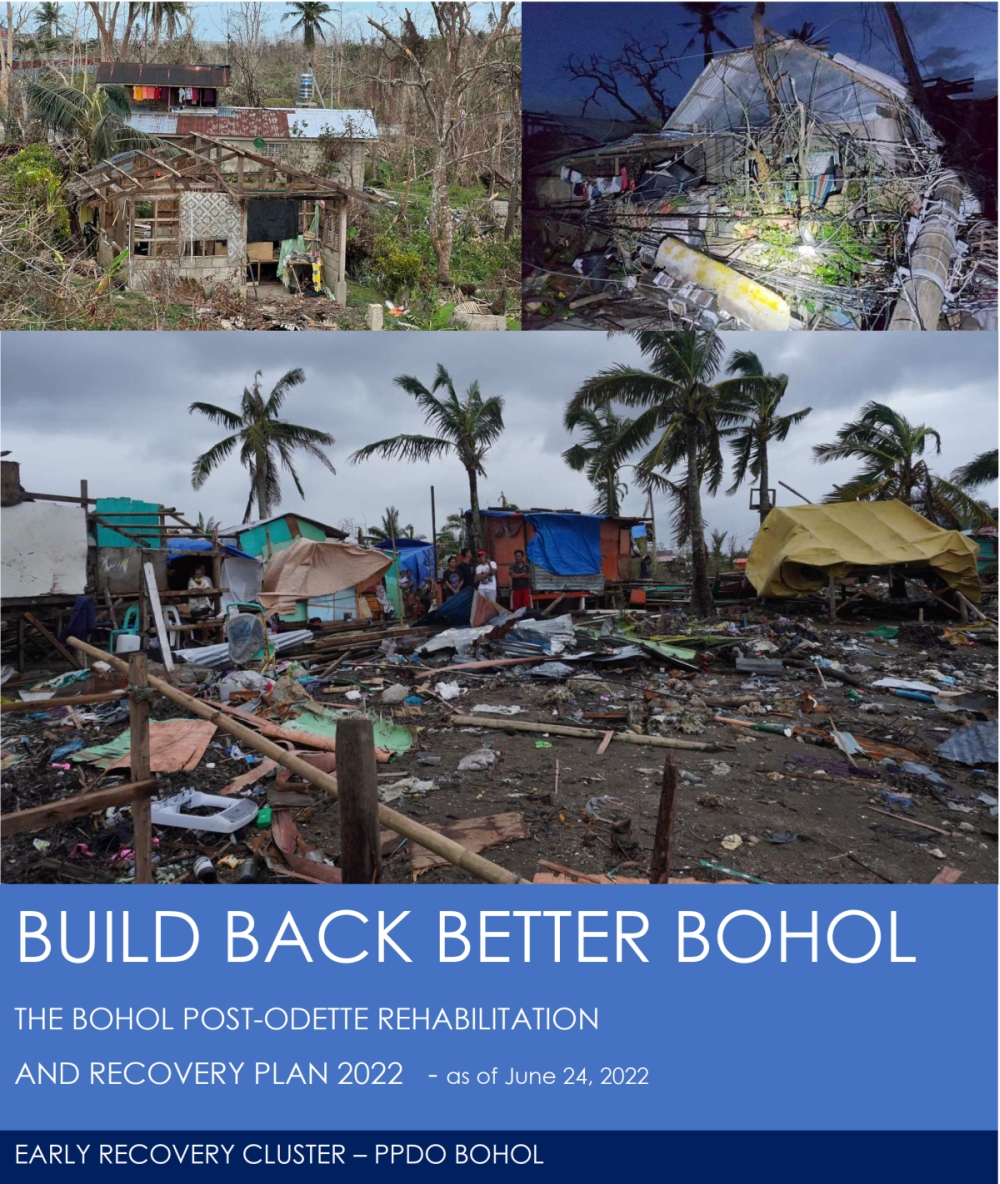Build Back Better Bohol
Super Typhoon Rai (known as “Odette” in the Philippines) is the 15th storm to hit the country in 2021 and is the strongest storm in that year. The typhoon made landfall on Thursday, December 16, 2021, at 1:30p.m. local time on Siargao Island in southern Philippines. Shortly after landfall with winds at 160 mph, it underwent an eye wall replacement cycle and decreased in strength to a Category 4, but winds remained at 150 mph. Rai (Odette) made several other landfalls at Category 3 and 4 intensities throughout the day as it moved through the Philippines. At 3:10 p.m. local time on Friday, December 17, 2021, the typhoon made its ninth landfall in Roxas, Palawan, before moving into the West Philippine Sea.
More than 300,000 people evacuated ahead of landfall and millions were affected. According to the National Disaster Risk Reduction and Management Council, more than 10,000 villages were in the path of the typhoon.
As a result of the typhoon, the entire province of Bohol has lost electricity, thereby depriving people all forms of communication services. Uprooted trees and fallen branches obstructed national, provincial, municipal, and barangay roads. Low-lying areas especially those located along the typhoon path while structures and vegetation farms along water tributaries and dams were flooded. Homes and vertical infrastructures as well as other properties and agricultural crops were affected. Livestock, poultry and agri-fishery were also damaged.
Typhoon Odette, according to the senior Bol-anons could be described as “one of the worst calamities that hit the province.” The provincial governor has declared Bohol under state calamity after physically assessing the condition of the entire province on December 17, 2021, a day after the calamity struck.
As of March 22, 2022, the Province of Bohol has recorded 110 deaths based on the reports of MDRRMOs of the 47 towns and 1 city in their Rapid Damage Needs Analysis (RDANA). Out of the reported deaths, DOH (on December 21, 2021) record the causes of demise of 61% of the 110 deaths as; 29 deaths after being hit by fallen trees or debris, 11 from hypothermia, 19 from drowning, 8 from heart failure, while the remainder are still for further investigation.
Damage to infrastructure, agriculture, livelihood and more, are described within the plan. As resilient as Boholanos can be, this plan is drafted to rehabilitate, recover, and build back a better Bohol.

